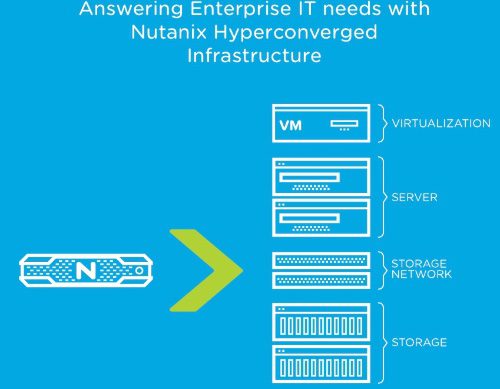Hyperconvergence is one of the hottest trends in IT infrastructure. Earlier this year, researchers at Gartner predicted, “The market for hyperconverged integrated systems (HCIS) will grow 79 percent to reach almost $2 billion in 2016, propelling it toward mainstream use in the next five years.” They added that the market should grow to $5 billion by 2019.
Supporting that forecast, a survey from 451 Research found that among the 32 percent of enterprises planning a major server and storage refresh this year, 86 percent expected to increase their investment in hyperconverged infrastructure.
Given the growing popularity of hyperconvergence, it should come as no surprise that a large number of vendors offer hyperconverged systems. In its Forrester Wave: Hyperconverged Infrastruture (HCI), Q3, 2016 report, Forrester named three pure-play vendors — Nutanix, Pivot3 and Simplivity — as “leaders” in the market. “Strong performers” included big-name IT vendors like Dell EMC, VMware, HPE, Cisco and Huawei, as well as smaller players like Atlantis Computing, HyperGrid (formerly Gridstore) and Stratoscale. And the report noted, “We expect hyperconverged systems to become ubiquitous, fueling a rush to market by all technology vendors.”
However, it also cautioned companies to be careful when purchasing hyperconverged systems because of the current marketing hype surrounding the technology. Just because a vendor labels hardware as hyperconverged, that doesn’t mean that the product will really deliver all the benefits that organizations are trying to achieve.
As with any emerging technology, there’s some disagreement about the definition of hyperconvergence. Gartner defines it as “a platform offering shared compute and storage resources, based on software-defined storage, software-defined compute, commodity hardware and a unified management interface.”
Forrester says that true hyperconverged infrastructure has four key characteristics: integrated compute and storage resources, software-defined storage, automatic discovery and configuration, and minimal management outside the hypervisor console.
Most definitions of hyperconvergence agree on a few key points. First, these are commodity systems that have both compute and storage capabilities. Second, hyperconverged systems include an element of software-defined infrastructure, and third, they simplify management.
This combination of characteristics offers several advantages for organizations.

Vendors that sell hyperconverged systems tout of number of benefits for this style of infrastructure, including the following:
Despite all these benefits, consultants warn that hyperconvergence isn’t right for every situation. Customers should be aware that the technology also has some potential drawbacks.
Given these pros and cons for hyperconvergence, the technology makes more sense for some use cases than for others. Hyperconverged infrastructure will likely be a good choice for you if you have one of the following needs:
Virtual desktops— Scale-out workloads like virtual desktop infrastructure (VDI) are ideal for hyperconverged infrastructure. Hyperconverged systems easily scale out as additional users are added, and the software-defined environment is ideal for this sort of virtualization. Analysts say that hyperconverged infrastructure that includes SSDs with built-in deduplication are often particularly beneficial for VDI.
Remote office/branch office (ROBO) — As edge computing becomes more popular, many organizations are deploying hyperconverged systems in ROBO environments. Remote locations often don’t have on-site IT staff, so easy-to-deploy and easy-to-manage systems are highly desirable in these settings.
Hybrid cloud – Many large organizations use public cloud computing services for many of their workloads, but because of concerns about compliance, security or other issues, they also need to host some workloads in private clouds in their data centers. Here again, hyperconvergence’s agility, scalability and support for virtualization make it a very good fit.
Ultimately, whether or not hyperconvergence is right for your situation is going to depend on a large number of different factors. However, most experts seem to agree that the technology is worth investigating.
SEE ALL
Datamation is the leading industry resource for B2B data professionals and technology buyers. Datamation's focus is on providing insight into the latest trends and innovation in AI, data security, big data, and more, along with in-depth product recommendations and comparisons. More than 1.7M users gain insight and guidance from Datamation every year.
Advertise with TechnologyAdvice on Datamation and our other data and technology-focused platforms.
Advertise with Us
Property of TechnologyAdvice.
© 2025 TechnologyAdvice. All Rights Reserved
Advertiser Disclosure: Some of the products that appear on this
site are from companies from which TechnologyAdvice receives
compensation. This compensation may impact how and where products
appear on this site including, for example, the order in which
they appear. TechnologyAdvice does not include all companies
or all types of products available in the marketplace.